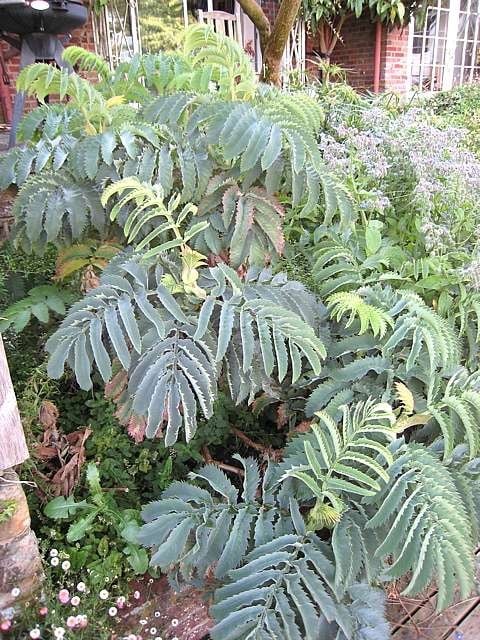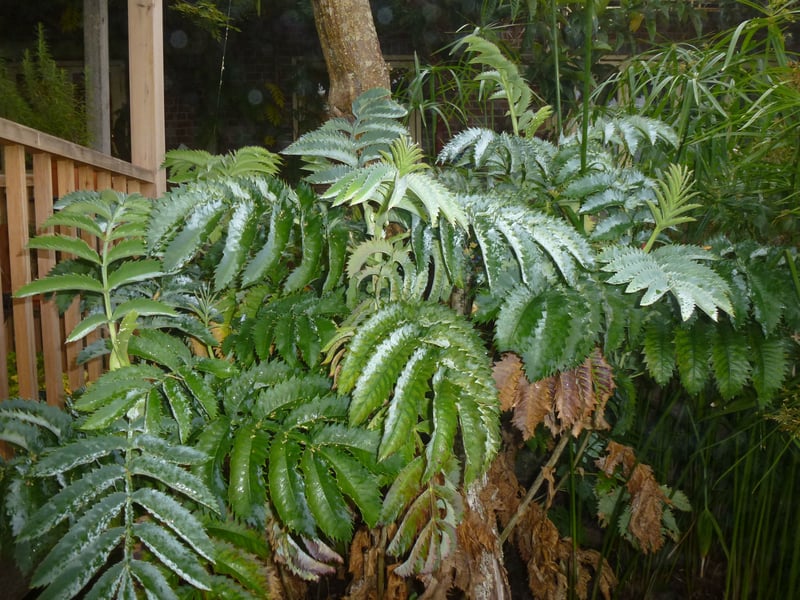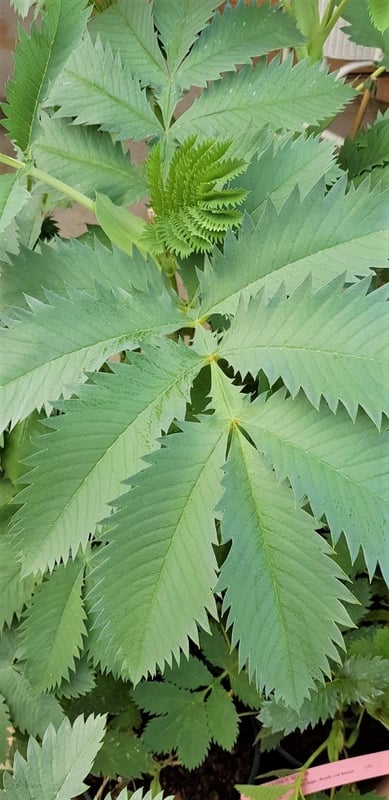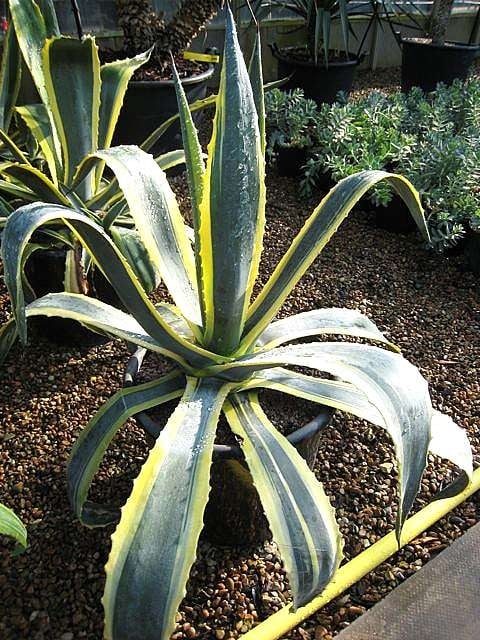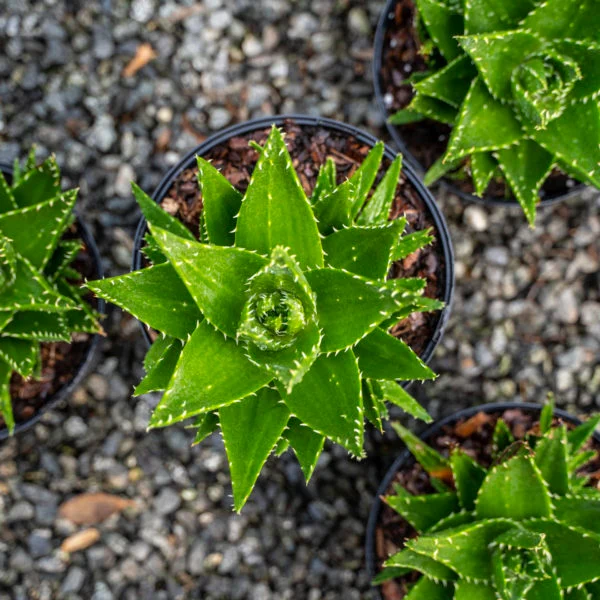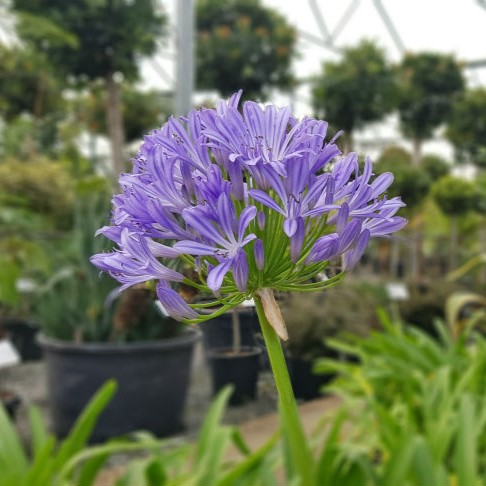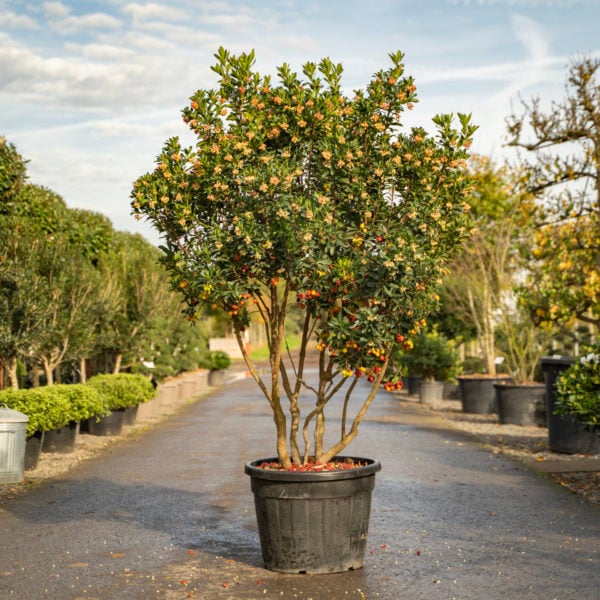Melianthus major (Honey Bush)
Instantly recognisable with its huge, blue, deeply cut leaves, red flower spikes and an air of peanut butter. Cut back by frost in cold gardens but always returns in spring. To 6ft in 1 year. Please contact us for stock availability.

Hardiness level Red
Great big bluey-grey saw edged evergreen leaves, dark red flower spikes and a strong aroma of peanut butter. It prefers plenty of light and reasonably well drained soil. In colder gardens, it'll get cut back by the frost but will re-grow in the spring. Always benefits from a bit of grooming from time to time - usually by just removing bent, brown and broken bits. In mild gardens where the frost doesn't control its size, it might get too big and leggy after a couple of years so never hesitate to cut back to near ground level in the spring for a better, more compact looking plant.
This plant has the curious habit of putting on a noticeable growth spurt in the autumn - between October and December. Is that because it comes from South Africa and therefore thinks the autumn is the spring? If it does, it's the only southern hemisphere plant I know of that behaves like that.
For information and ideas on winter protection go to Wrapping for Winter in the Glossary of Terms
Propagated by us by seed gathered in South Africa
Additional Information |
|
|---|---|
| Soil Type | |
| Light | |
| Plant Type | Big Leaves / Exotics, Evergreen, Flowers, Grown by Us, Herbaceous |
| Continent of Origin | |
| Specialist Plants | |
| Features | |
| Situation | Coastal, Mild City Gardens, Plants for Pots, Sheltered Garden |
| Flower Colour | |
| Hardiness | |




